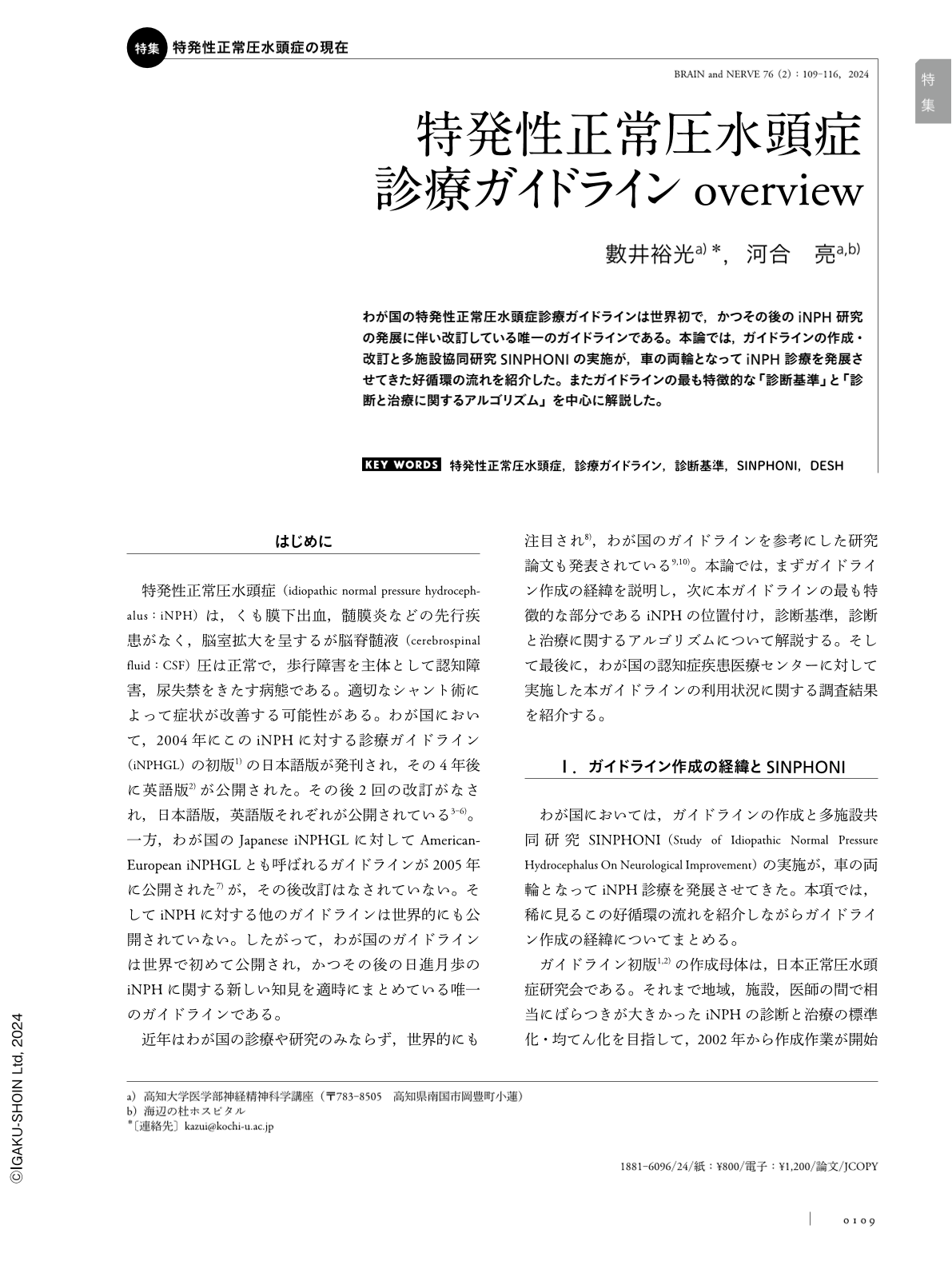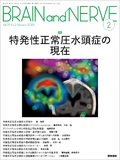Japanese
English
- 有料閲覧
- Abstract 文献概要
- 1ページ目 Look Inside
- 参考文献 Reference
わが国の特発性正常圧水頭症診療ガイドラインは世界初で,かつその後のiNPH研究の発展に伴い改訂している唯一のガイドラインである。本論では,ガイドラインの作成・改訂と多施設協同研究SINPHONIの実施が,車の両輪となってiNPH診療を発展させてきた好循環の流れを紹介した。またガイドラインの最も特徴的な「診断基準」と「診断と治療に関するアルゴリズム」を中心に解説した。
Abstract
Japanese guidelines for idiopathic normal pressure hydrocephalus (iNPH) (iNPHGL) are the first and only guidelines in the world that were revised following subsequent developments in iNPH research. We first discuss the virtuous cycle in which the development and revision of the iNPHGL and how the implementation of two consecutive multicenter prospective studies conducted in Japan, SINPHONIs, have worked together to advance iNPH practices. Subsequently, we explained the most characteristic features of the iNPHGL, such as “Positioning of iNPH,” “Diagnostic Criteria,” and “Algorithms for Diagnosis and Treatment.” To classify iNPH, we categorized chronic adult-onset normal pressure hydrocephalus (NPH) as iNPH, secondary NPH, Congenital/Developmental NPH, and Familial NPH. In the diagnostic criteria and algorithm, we classified iNPH into four categories: Suspected iNPH, Possible iNPH, Probable iNPH, and Definite iNPH, depending on the certainty of the diagnosis. In addition, a positioned disproportionately enlarged subarachnoid space hydrocephalus (DESH) on head computed tomography and magnetic resonance imaging is an important finding for the diagnosis of iNPH. Finally, we presented the results of a survey on the treatment status of patients with suspected iNPH, awareness of DESH, and use of this iNPHGL among medical centers for dementia in Japan.

Copyright © 2024, Igaku-Shoin Ltd. All rights reserved.


